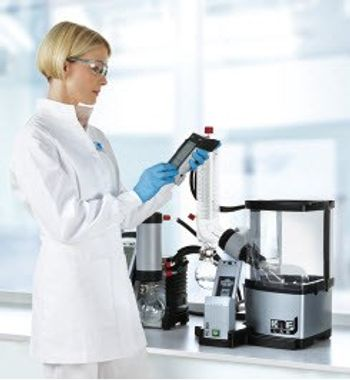
KNF Neuberger announces the launch of its RC 900 Rotary Evaporator, designed to simplify rotary evaporation and enhance safety in the lab. The all-new RC 900 provides lab personnel with a unique combination of high-performance functionality and a simplified user experience, from an instrument that remains whisper-quiet and requires minimal space on the lab bench.
“At KNF Lab, we pride ourselves on our strong reputation for producing solid, high-performance equipment for real laboratory situations,” said Jim Findlay, Marketing Manager, Laboratory Products at KNF. “The new RC 900 is a perfect example of this, making rotary evaporation more user-friendly than ever before.”
The RC 900 provides lab personnel with streamlined rotary evaporation via a multitude of operational enhancements. Specifically, the instrument boasts straightforward flask exchange; now, a scientist can simply lock the flask into place using just one hand. Optimum flask angle is conveniently set via an adjustable knob. The system offers wireless control of all evaporation functions with an easy-to-use touchscreen and control knob. A cordless heating bath with pour spout encourages safe emptying without spilling, maximizing ease-of-use.
“Our experience with KNF Lab pump systems has been great, and we were happy to test the rotary evaporator,” said Dr. Alexander Scherer, Chair of Organic Chemistry at the Friedrich-Alexander-Universität Erlangen-Nürnberg, Germany, who has beta-tested the new system in his laboratory. “We exposed the RC 900 to real laboratory conditions, such as corrosive and aggressive solvents, and made further suggestions on how to make the system even easier to operate. KNF Lab took these suggestions on board and the result is a high-performance system that features a user-friendly, intuitive touch screen and automated functions which really make life easier, helping to guarantee highly efficient and safe operation. We are delighted to be one of the first laboratories to buy one.”
